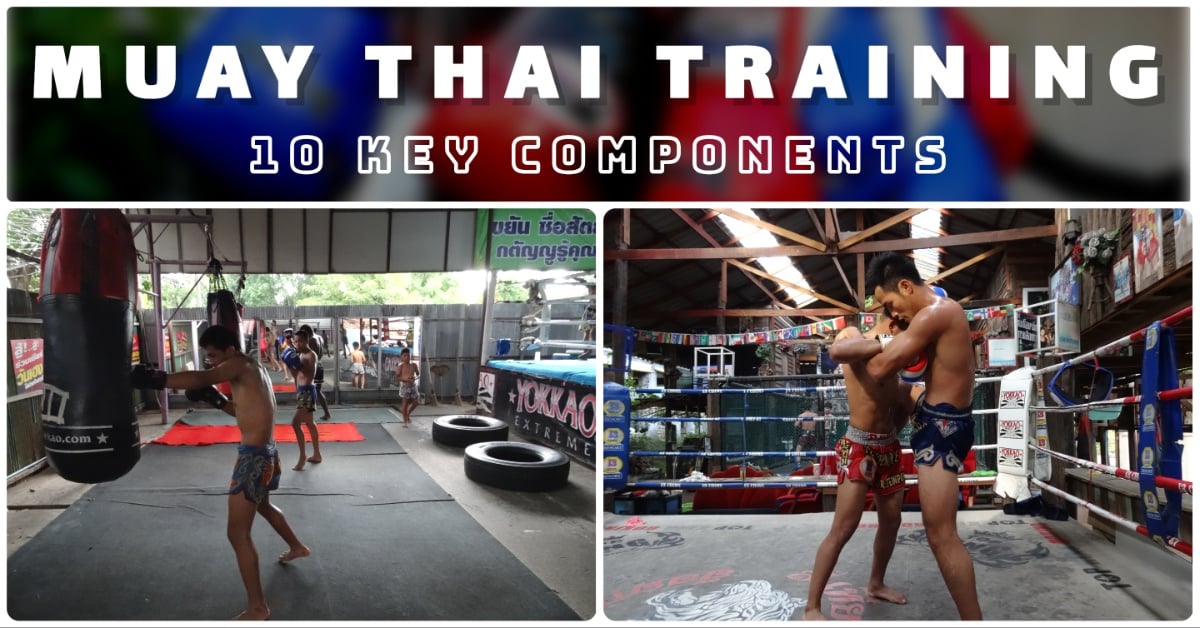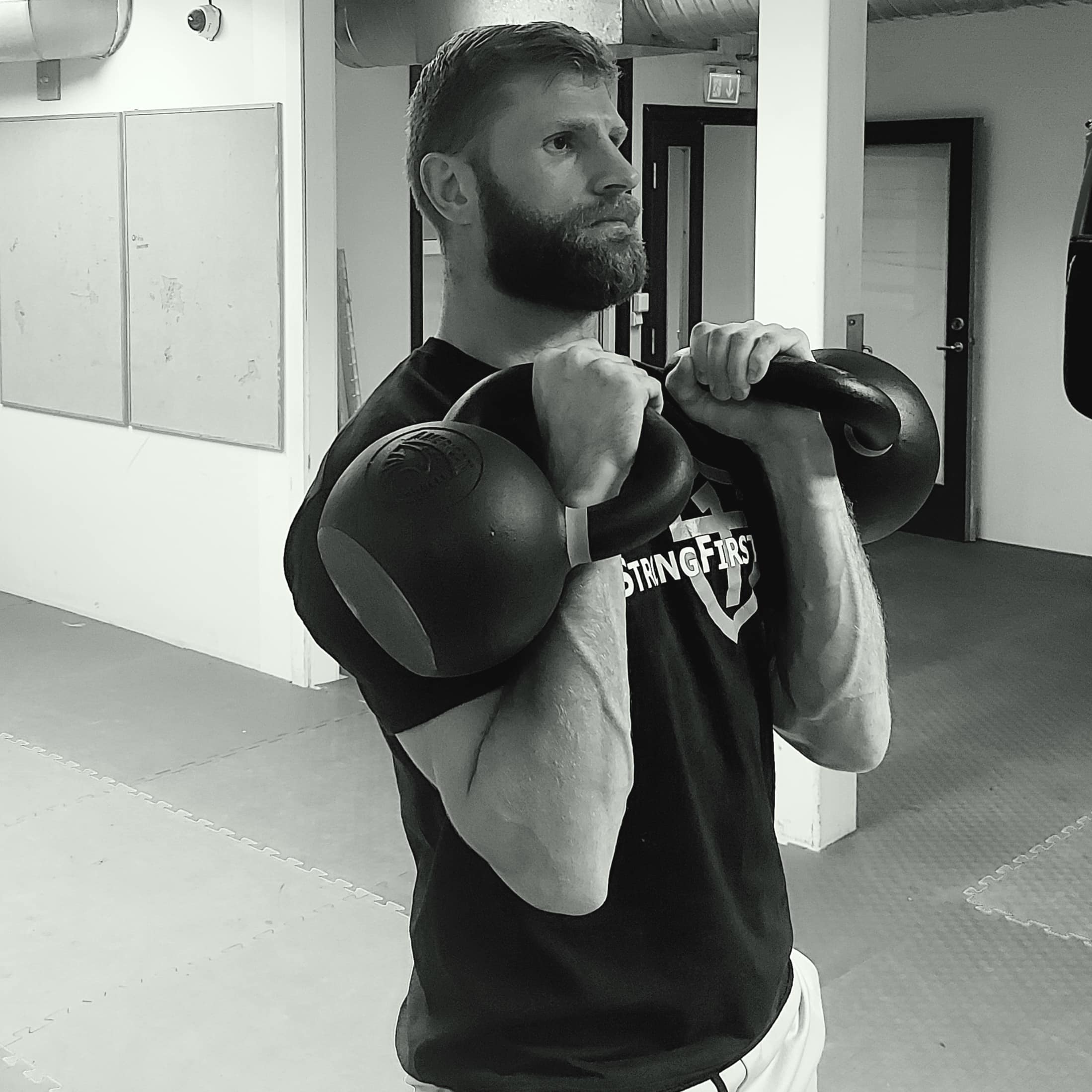Muay Thai Training: 10 Key Components For Success
Muay Thai training should be considered a comprehensive system designed to develop our physical, mental, and technical abilities. Each element of the training regime serves a specific purpose, contributing to our overall success as Muay Thai athletes, regardless of our long-term goals.
In this article, we’ll explore the various components of Muay Thai training, providing insights into why each activity is crucial for developing us into hardened fighters or competent recreational practitioners.
10 Key Components of Muay Thai Training
1) Running
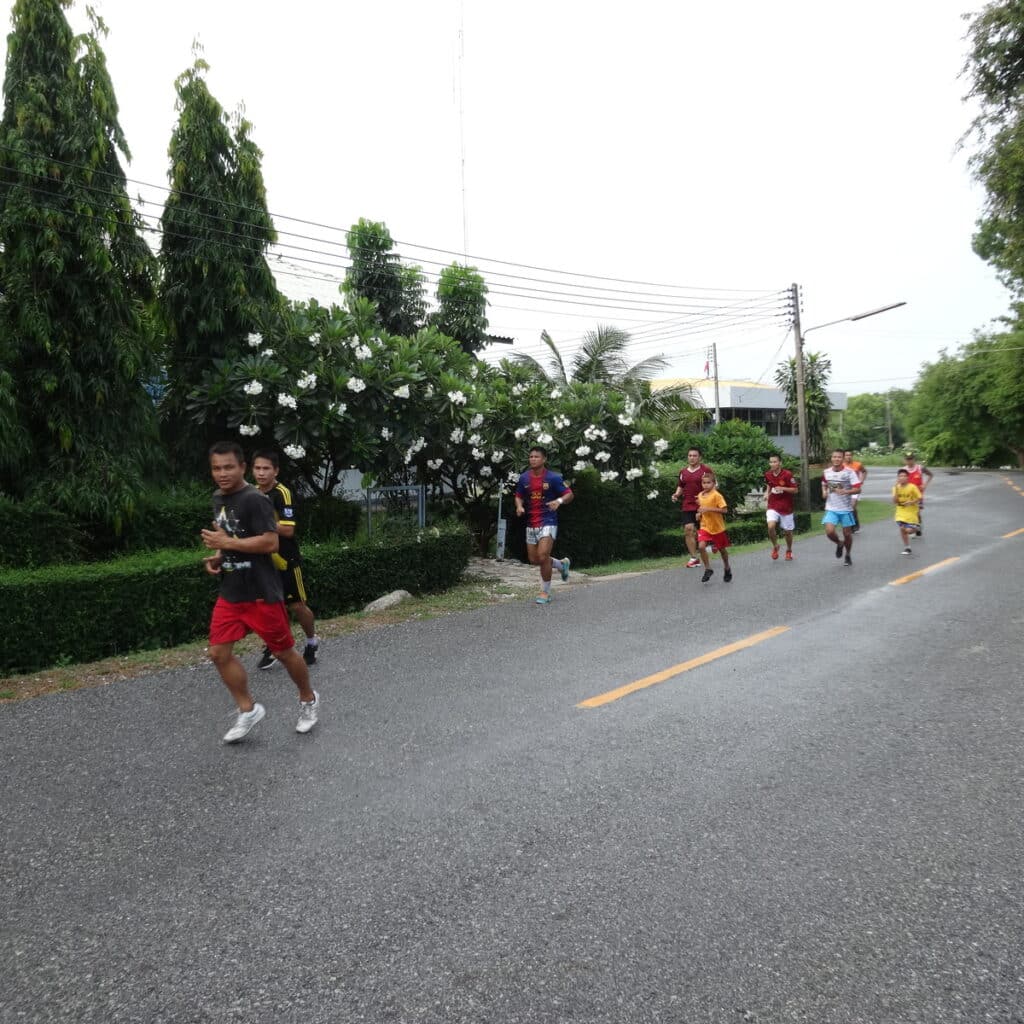
Running is a cornerstone of Muay Thai training and is the first activity performed by professional fighters in Thailand during both their morning and afternoon training sessions. Elite fighters typically run around 10 km in the morning session and around 4-5 km in the afternoon.
The rationale behind Thailand’s emphasis on running lies in the need for a highly efficient aerobic system during Muay Thai fights, which can last for more than 20 minutes (five 3-minute rounds with 2 minutes of rest between rounds). The aerobic system provides a large portion of the energy needed during a Muay Thai fight. The more efficiently our aerobic system functions, the greater its contribution to the total energy expended during a fight or training session. This reduces the reliance on anaerobic systems, helping to conserve muscle glycogen and preventing a drop in muscle pH, which in turn reduces fatigue.
2) Skipping
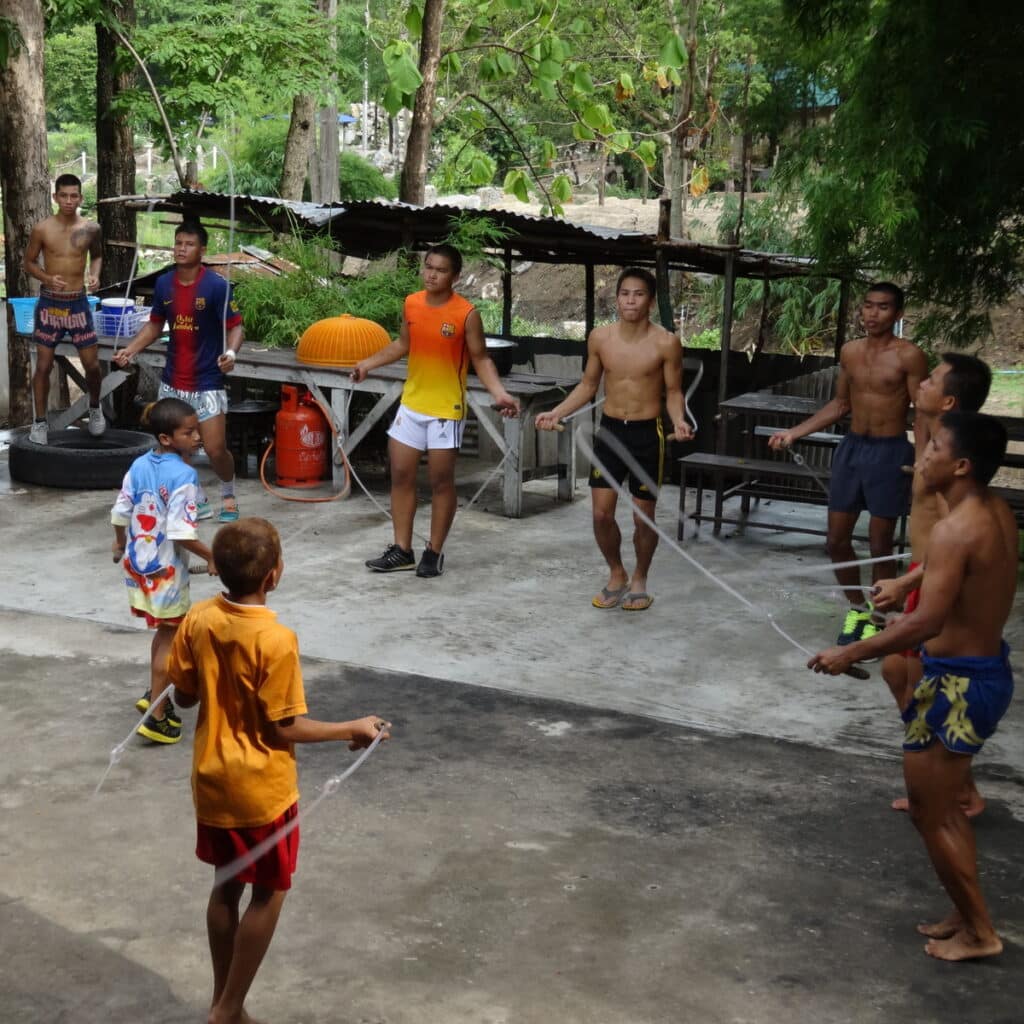
Skipping, or jump rope, is another fundamental component of Muay Thai training, typically making up around 30 minutes per day in successful Thai gyms. It enhances footwork, agility, and coordination through quick, light movements that translate into faster footwork and more powerful strikes in Muay Thai.
In addition to its physical benefits, skipping helps develop a consistent rhythm, accurate timing, and improved concentration and focus—crucial elements for maintaining composure during a Muay Thai fight. There isn’t a successful fighter on the planet who isn’t a proficient skipper.
3) Shadow
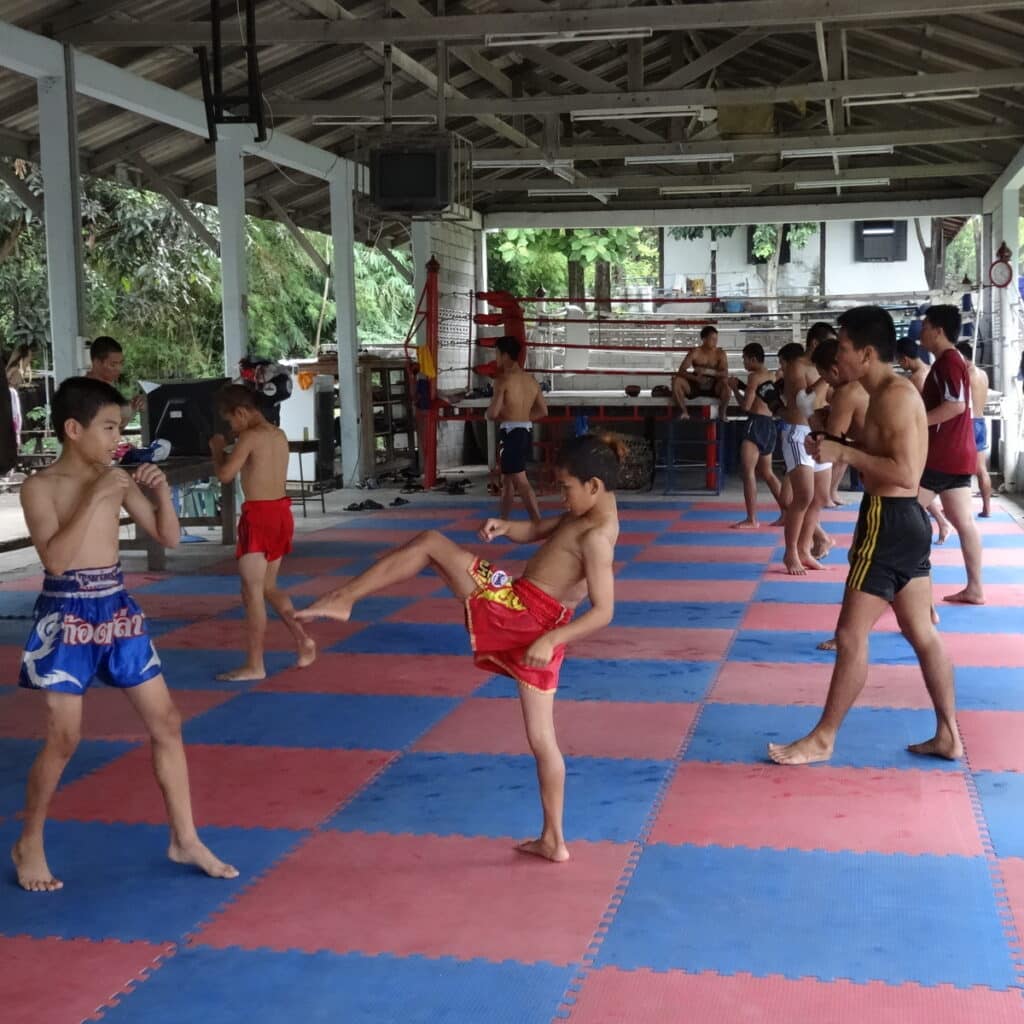
Shadow work is perhaps the most fundamental aspect of our Muay Thai training. It involves practicing techniques and combinations without any equipment or a partner, allowing us to focus on refining our form, footwork, and overall movement.
Shadow work helps us perfect techniques in a low-impact environment. In Thailand, trainers are often heard saying something to the effect of, “If you can’t do ‘X’ in shadow, then how can you do it on the bag, on pads, in sparring, or in a fight?!”—emphasising the importance of using shadow work as a ‘testing ground’ before moving on to other training methods.
4) Partner Drills
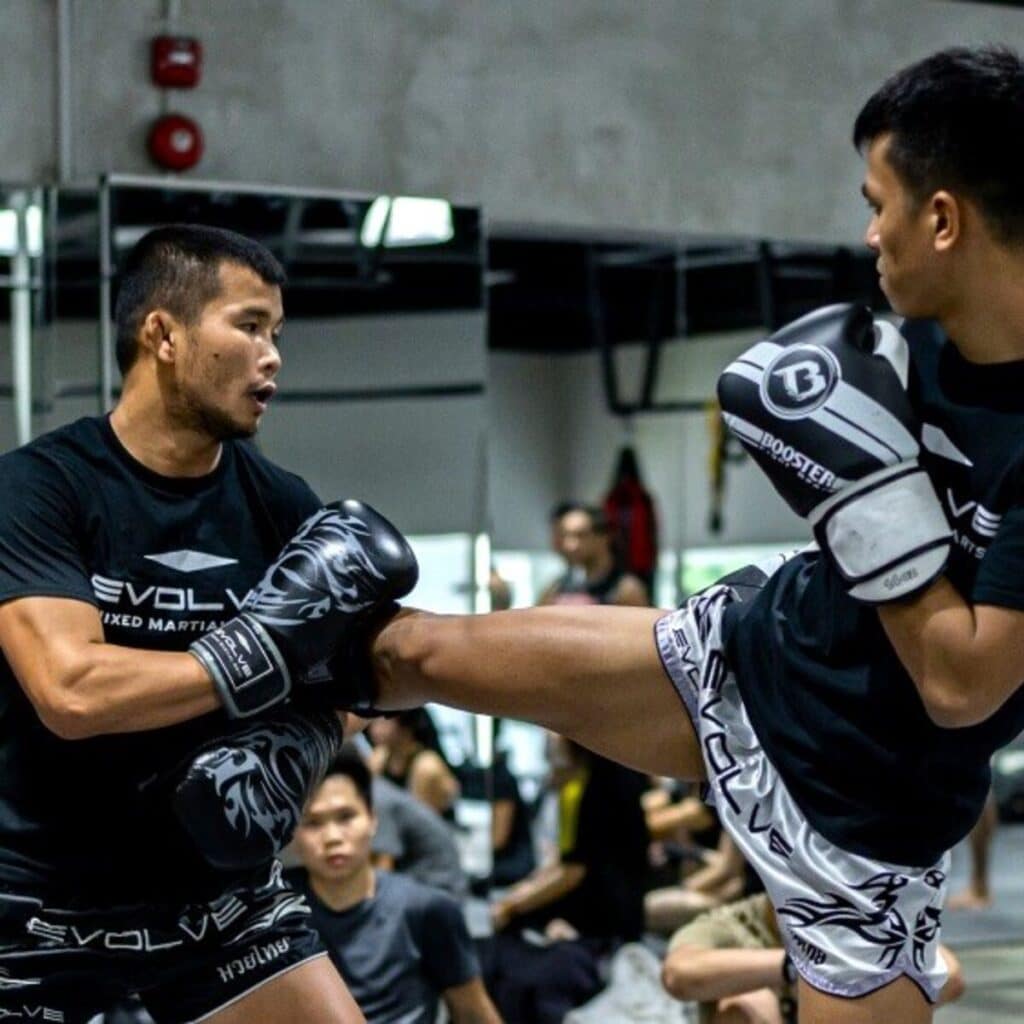
Partner drills often make up a significant portion of Muay Thai training in Western countries. However, in Thailand, they are not a standard part of training, except in tourist gyms that have compromised their training and values to cater to paying visitors. Despite this, outside of Thailand, partner drills can be a useful way to refine techniques with a real person in a controlled environment, without the added pressure of avoiding strikes.
Protective equipment such as shin guards, hand wraps and gloves can be worn for kicking and punching drills, while other techniques like elbows and knees can be placed gently to simulate a connection. Clinching drills in training help us develop problem-solving skills and reaction speed, while also strengthening the musculature necessary for a strong clinching frame, resistant to the pushing and pulling forces of our partner.
5) Sparring
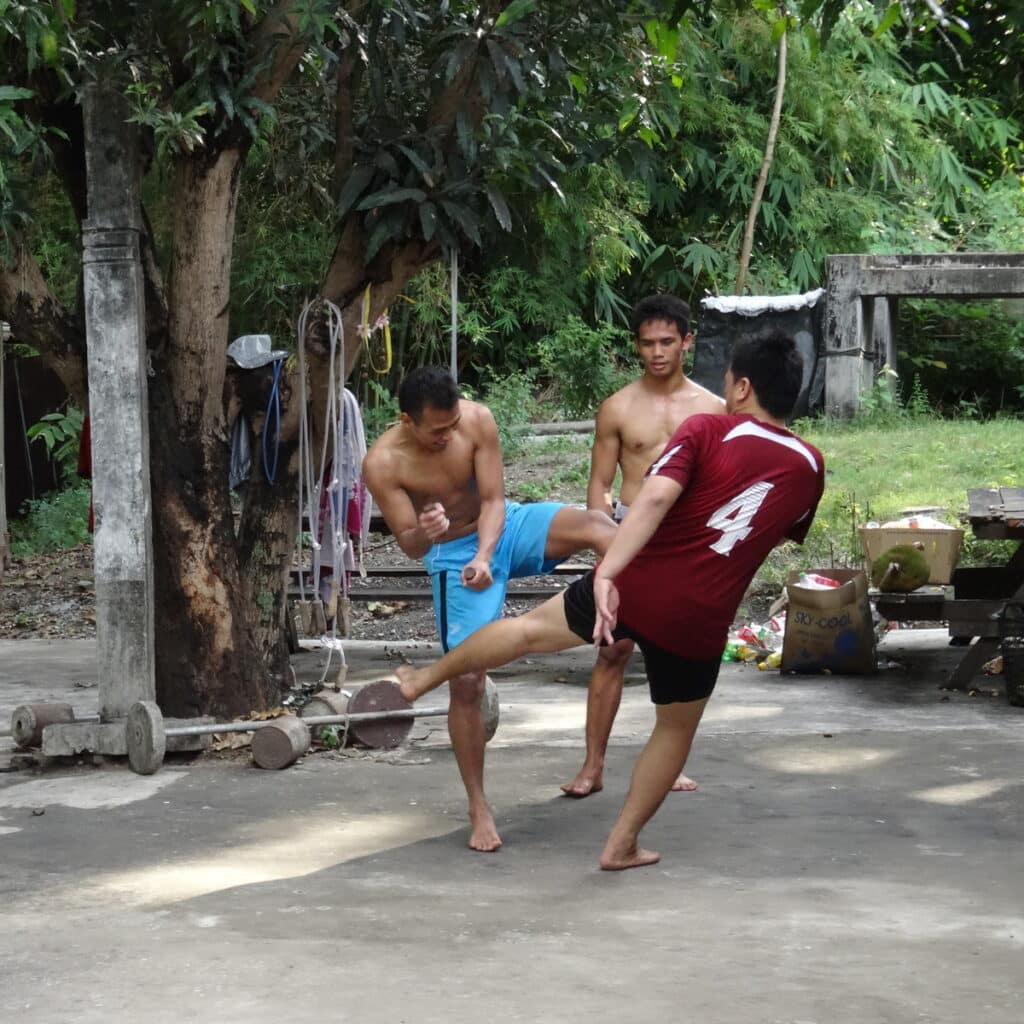
Along with clinch sparring, this is where all the elements of our Muay Thai training come together. It’s the closest simulation to a real fight, allowing us to apply our techniques in real-time against a resisting opponent. Sparring sessions are controlled, with varying levels of intensity, depending on experience and goals.
The primary purpose of sparring is to test techniques, improve timing and distance management, and develop the mental fortitude needed for actual competition. It’s an opportunity to experiment with different strategies, adapt to different opponents, and learn from mistakes in a relatively safe environment.
Protective equipment such as a mouth guards, gloves, and shin guards can be worn for heavier sparring sessions, while no equipment is needed for light ‘touch sparring’ sessions, which use minimal contact.
6) Bag Work
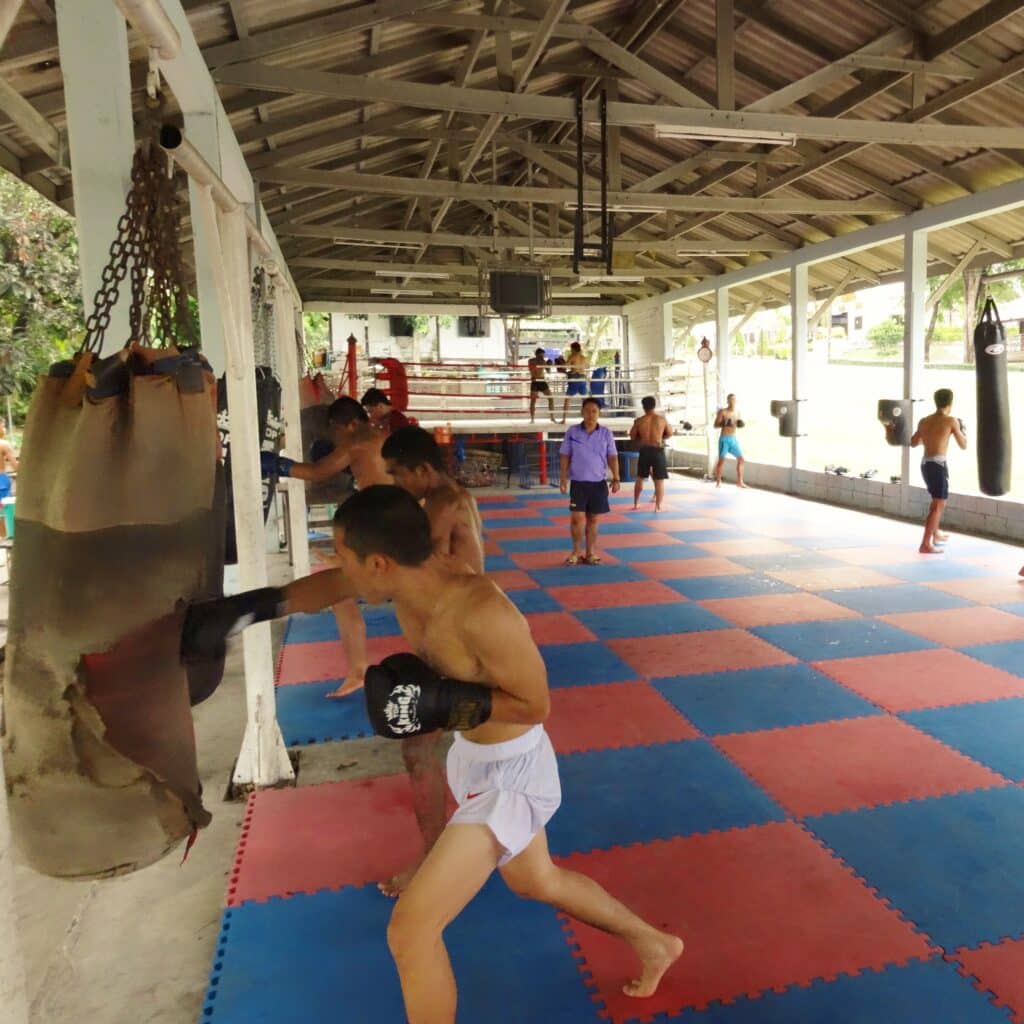
Bag work is a long-standing element of Muay Thai training. The heavy bag provides resistance, enabling us to practice punches, kicks, elbows, and knees with full force. Over time, repeated impact with the bag helps to toughen the bones and joints, making our bodies more resilient to injury.
Bag work is also an opportunity to work on combinations, footwork, and any techniques that require additional repetition. The repetitive nature of bag work allows for continuous improvement in technique, ensuring that strikes become more precise and powerful with each session. Muay Thai training in Thailand often consists of around five 5-minute rounds during the afternoon training session, with fewer rounds performed in the morning session.
7) Pad Work
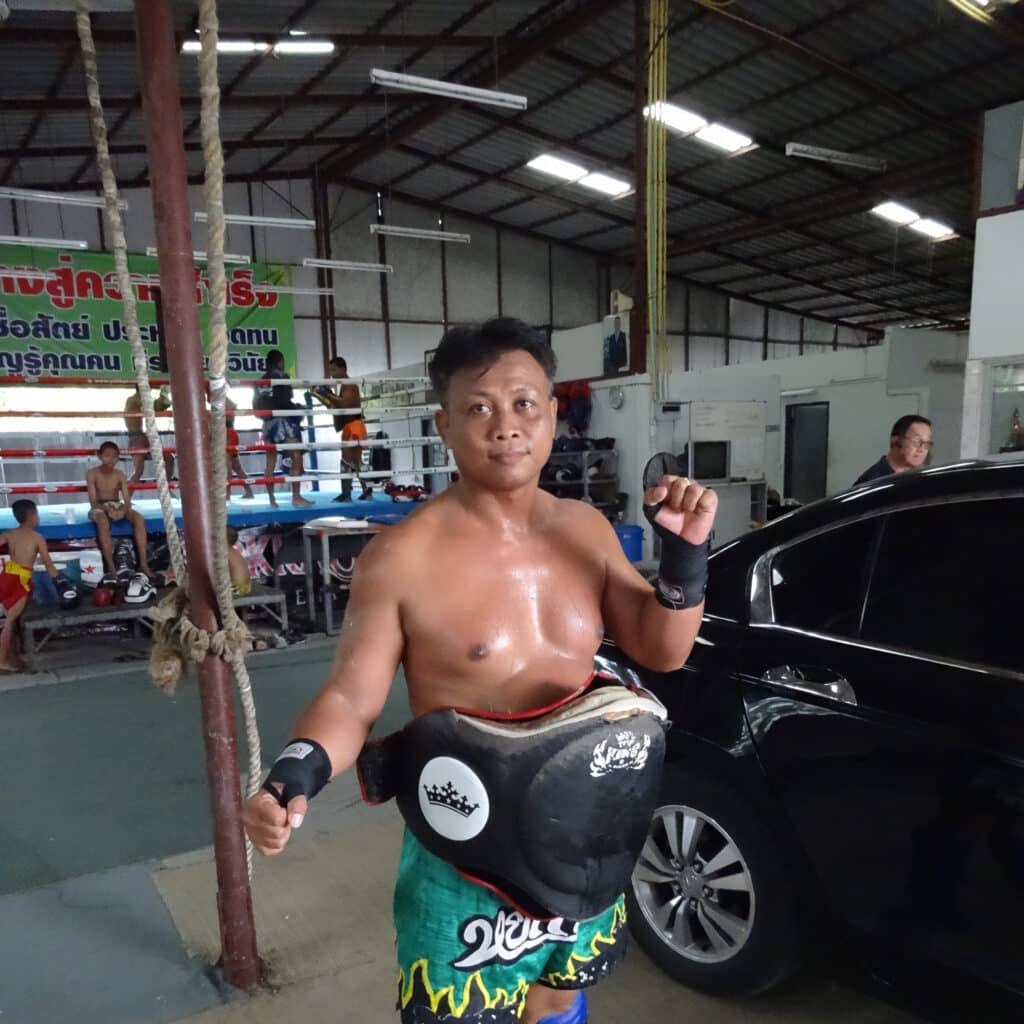
Pad work is crucial for developing precision, timing, and adaptability in Muay Thai training. Unlike bag work, pad work involves an interactive partner, simulating the unpredictable nature of a real fight.
When hitting Thai pads, we can practice specific combinations, defensive manoeuvres, and counterattacks. Trainers often call out techniques or combinations, forcing us to react quickly to their commands. This training sharpens our reflexes, improves our accuracy, and helps us adapt to different fighting styles and scenarios.
Pad work also provides immediate feedback from the trainer, who can correct mistakes and offer advice. Professional Thai boxers often perform five 5-minute rounds of pad work in the afternoon, and may also do a few rounds of light pad work after the morning run, though this isn’t always compulsory.
8) Clinch Sparring
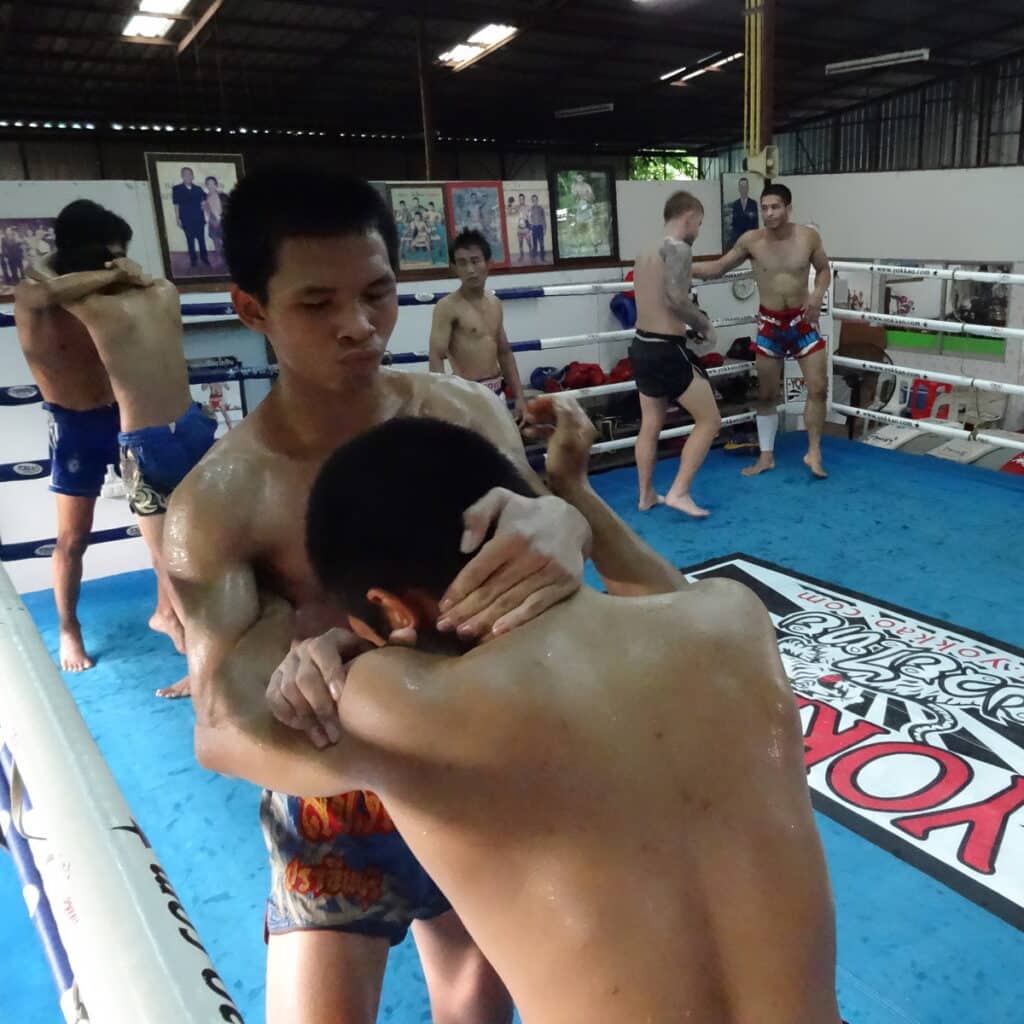
Clinching is a unique aspect of Muay Thai training that involves stand-up grappling with an opponent at close range, typically lasting 30 to 90 minutes at elite gyms in Thailand. It is like playing a game of chess with an opponent; it’s about reading their energy, manipulating their movements to set up strikes, and disrupting their balance with pushes and sweeps. It is very much a mental game, requiring us to stay calm, think strategically, and outmanoeuvre our opponent.
Clinching is a skill that requires strength, balance, and a deep understanding of body mechanics. This type of training improves our ability to remain composed under pressure and can be psychologically taxing, especially when being repeatedly swept to the canvas by a more technical opponent.
9) Strength Training
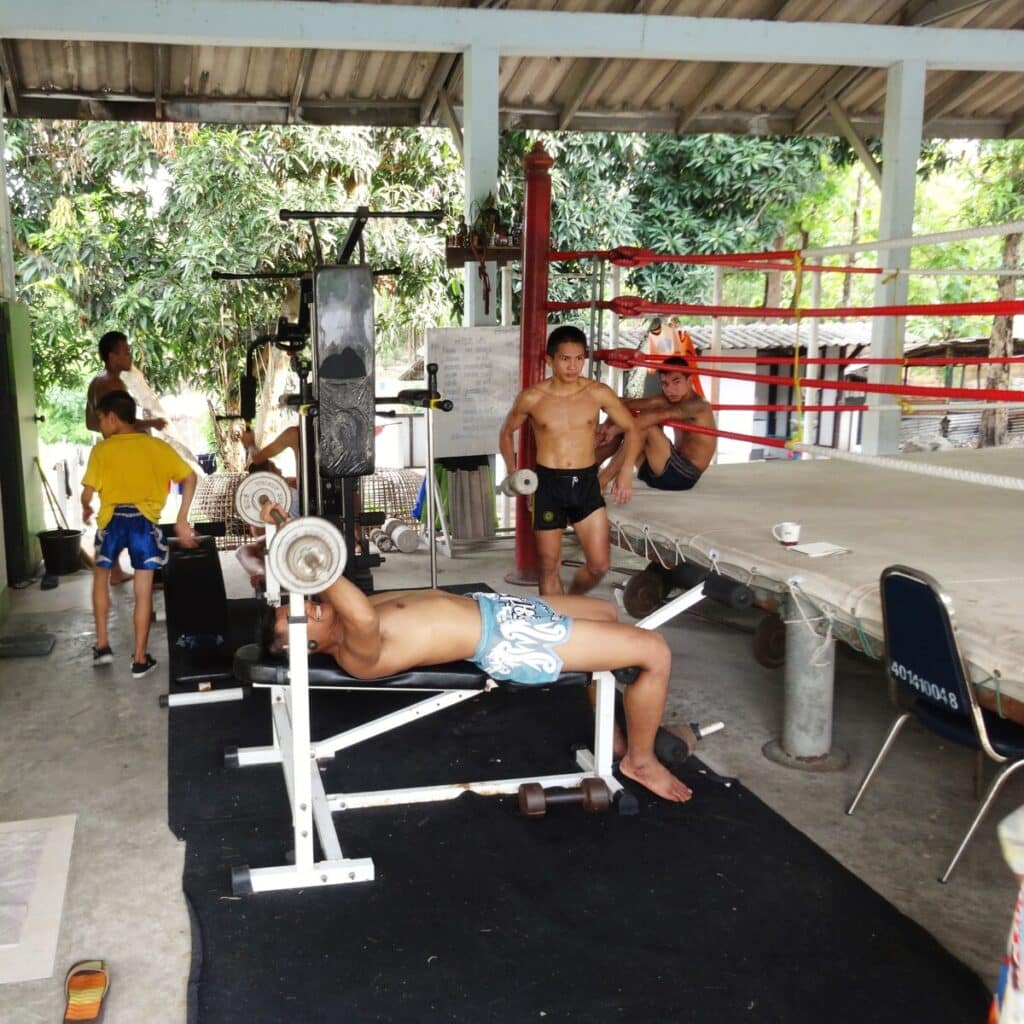
Strength training is essential for enhancing Muay Thai performance as it boosts striking force, improves endurance, and increases overall athletic performance while also reducing the risk of injury. Whole-body training shifts away from traditional bodybuilding’s focus on isolated muscles, emphasising compound movements like squats, deadlifts, military presses, and pull-ups. These exercises engage multiple muscle groups and joints simultaneously, providing a more integrated and timely session.
Focusing on movements such as hinging, squatting, lunging, pushing, pulling and carrying builds overall strength, stability, and mobility. By concentrating on movement patterns rather than isolated muscles, we can minimise overtraining and soreness while better preparing ourselves for real-world performance demands.
Anyone wishing to complement their Muay Thai training should aim for 2-3 one-hour whole-body sessions per week.
10) Fight Study
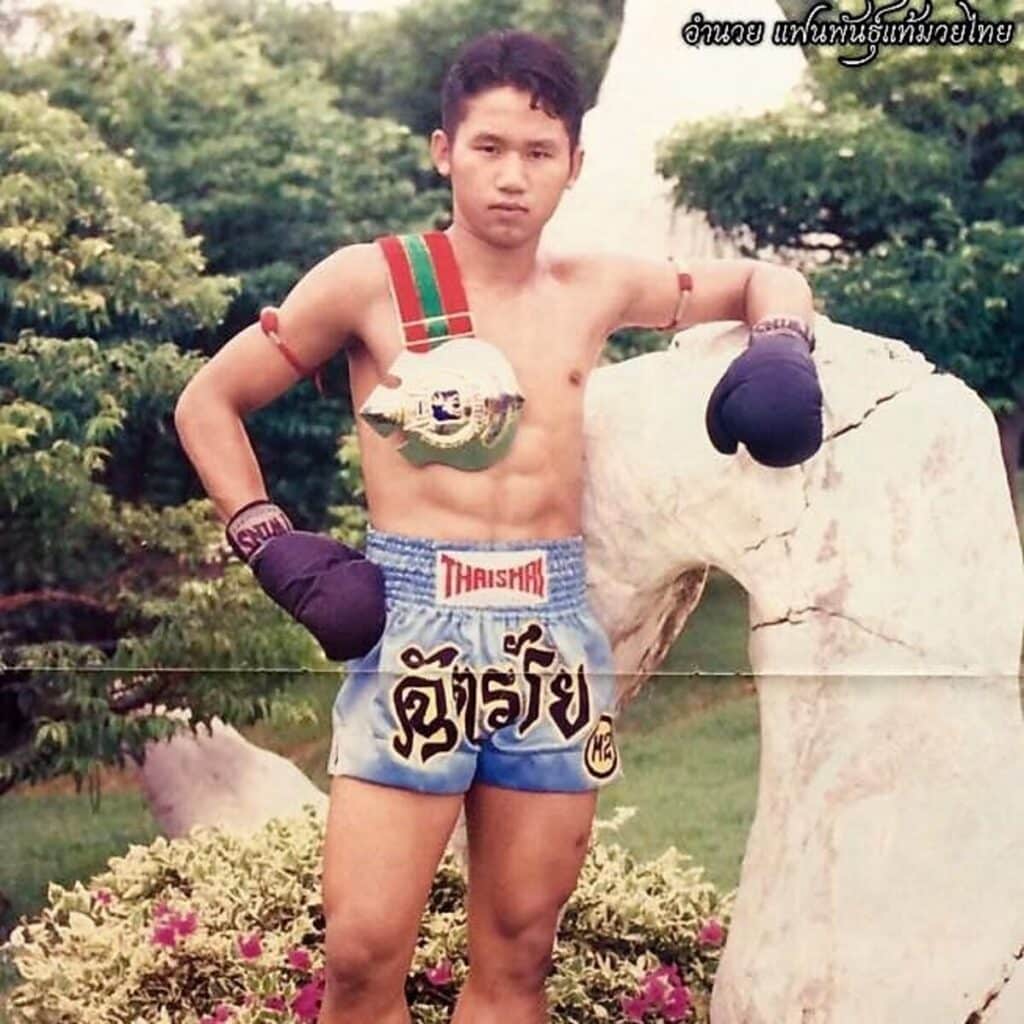
Studying fights is an invaluable practice as we look to improve our skills and understanding of the sport. By watching and analysing some of the best fighters in history, we can gain insights into different fighting styles, strategies, and techniques that can be applied to our own Muay Thai training.
Furthermore, studying the fights of past and present Muay Thai legends can inspire and inform our approach to the sport. Whether it’s the relentless clinch work of Samson Issan, the immaculate body kicks of Pudpadnoi Worawut, or the technical wizardry of Boonlai Sor Thanikul, learning from the best can help elevate our skills and broaden our tactical arsenal.

